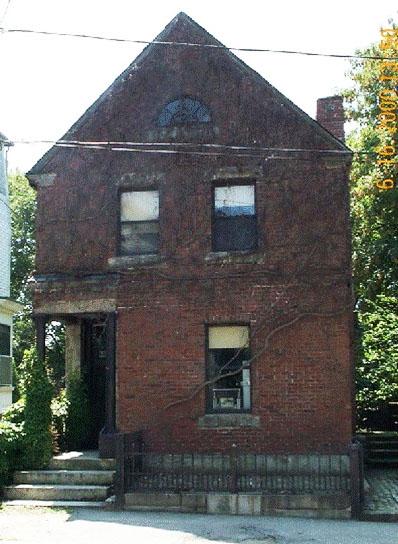PROVIDENCE, R.I. [Brown University] — The house at 93 Benevolent Street stands out among its neighbors. Its vine-covered brick exterior and short stature are a contrast to the tall wood-shingled structures that line the rest of the street.
But it’s not just the building’s facade that sets it apart. Known to many as Bannister House, it was once the home of celebrated African American painter Edward Mitchell Bannister and his wife. The house, which is owned by Brown University, will now get a second life, with plans underway to begin renovation of the history-rich home.
Acquired by Brown in 1989 and vacant since the mid-1990s, Bannister House will become part of the Brown-to-Brown (B2B) program. B2B renovates vacant or under-utilized properties owned by Brown, preparing them for purchase by Brown faculty or staff. The goal of the program is to improve to the surrounding College Hill neighborhood, while turning houses into taxable real estate for the City of Providence.
“Brown has successfully renovated and sold 12 homes in the Brown-to-Brown program, including four along Benevolent Street,” said John Luipold, assistant vice president for real estate. “I'm thrilled that we can renovate the historic Bannister House and put it back into productive use on College Hill for years to come.”
The house was built in 1854 by engineer Charles E. Paine. Bannister and his wife Christiana, its namesakes and most famous residents, rented the home from 1884 to 1899. A founding member of the Providence Art Club, Bannister was best known for his tonalist-style landscapes and seascapes. In 1876, he won the first-prize bronze medal for his oil painting "Under the Oaks" at the Philadelphia Centennial. Many of his works are now in the Smithsonian American Art Museum.
In the 1930s, the house was remodeled by Louise Herreshoff and her husband Euchlin D. Reeves to store their extensive collection of antique porcelain. That project erased most traces of the home Bannister would have recognized, replacing the house’s original wood shingles with brick. Brown’s renovation will return the house to its original wood exterior, and the interior will undergo significant renovation, including new mechanical, electrical, and plumbing systems, new bathrooms, kitchen, flooring, and walls.
A number of Brown students have studied the house and its history. The structure was one of the first to be included in Facades, a walking-tour app developed in 2011 by students in a history of architecture seminar. Evan Sweren, a graduating senior, devoted his final semester at Brown to an independent study project of the house and Bannister’s work. Sweren located images of the house as it was before the remodeling — images that are informing Brown’s renovation of the property — and advocated for the renovation.
Because the house had been heavily remodeled over the years, the structure did not qualify for the plaque program administered by the Providence Preservation Society to mark restored and preserved historic properties. The University plans to consult with the PPS to develop a suitable way of recognizing the site as the historic home of the Bannisters.
“As a building that we have included on our Most Endangered Properties List, we believe [93 Benevolent Street] holds special significance for the Providence community as the historic home of Edward and Christiana Bannister,” said Brent Runyon, executive director of the Providence Preservation Society. “Brown University is doing the right thing by developing preservation strategies for it. We are pleased to be involved in the conversation around the best outcome for the house.”
Renovation of Bannister House will begin this summer and should be completed before the end of the year.

